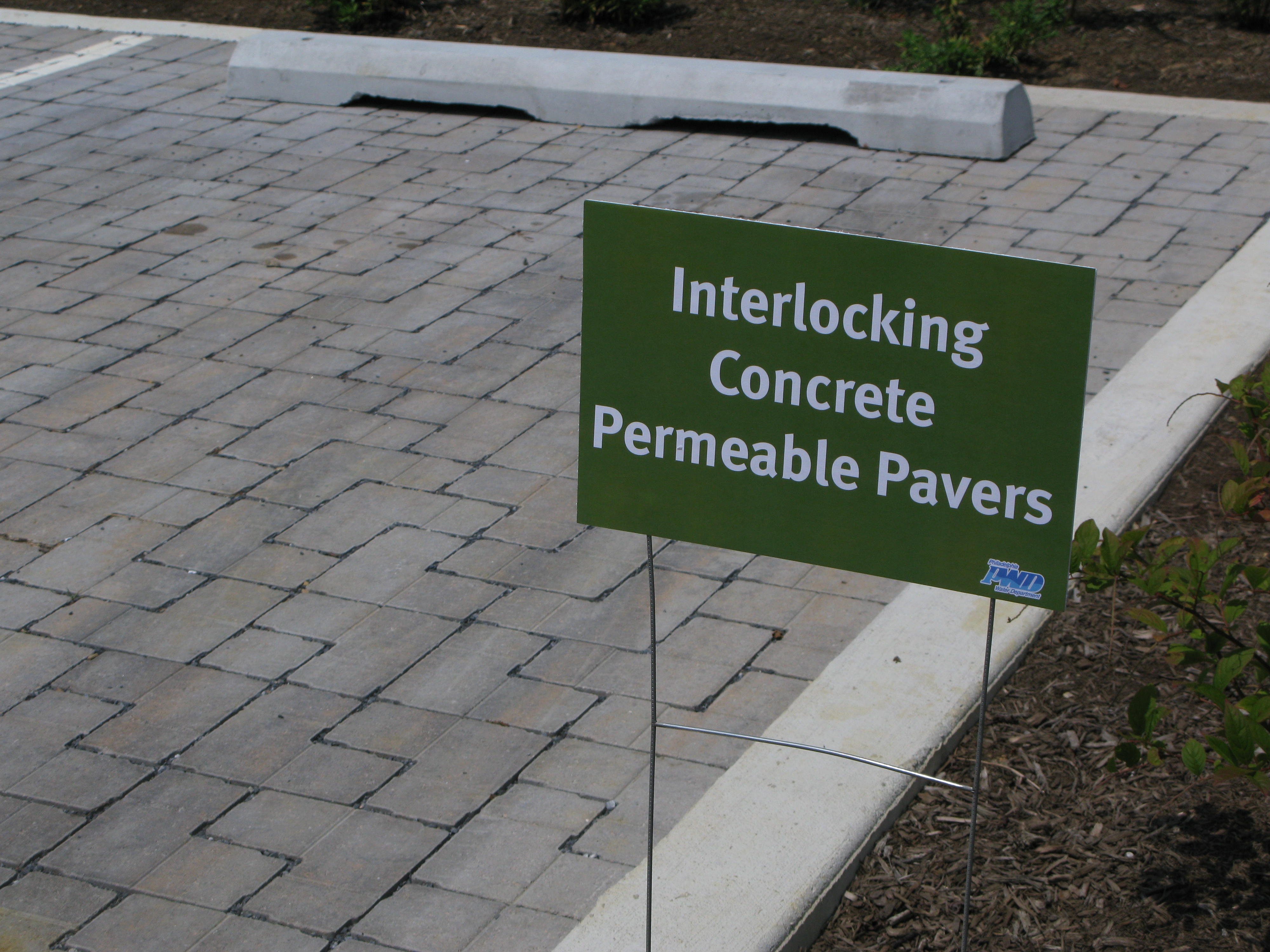The Bottom Line: Why Permeable Pavements are Good for the Environment and Your Pocket
by Jeanna Henry

A Philadelphia Water Department parking lot includes interlocking concrete permeable pavers and other types of permeable pavements
Are you looking for ways to reduce your environmental footprint, improve water quality, and save money? If so, permeable pavements are a great way to green your community – and put some “green” back in your pockets.
We’ve blogged recently about the environmental benefits of permeable pavements, a green infrastructure alternative that can be used for stormwater management in urban areas. Did you know this technology also provides a host of economic benefits?
Permeable pavements are one way take advantage of financial incentives from many state and local governments for reducing stormwater fees, and they can potentially help developers and property owners qualify for credits under the U.S. Green Building Council’s Leadership in Energy & Environmental Design (LEED) certification program.
Local economies also benefit from the use of permeable pavements because they create “green” jobs. In addition, permeable pavements serve as both a paved surface and a stormwater management system, so they can reduce the need for conventional stormwater management practices such as piping, retention ponds and swales, resulting in overall cost savings.
Permeable paving is being used across the mid-Atlantic, in places like Philadelphia, PA, Washington, DC, and Baltimore, MD. But my favorite illustration of cost savings is out of the University of New Hampshire (UNH), which happens to also be one of five recent Science to Achieve Results (STAR) grant recipients researching green infrastructure in Philadelphia.
This UNH case study compares the costs of conventional and low impact development (LID) stormwater management designs. The LID design included the installation of two porous asphalt parking lots covering a total of 4.5 acres. Although the paving costs for the porous asphalt drainage systems were estimated to cost an additional $884,000, the LID option provided significant cost savings for earthwork ($71,000) and stormwater management ($1,743,000). Total project cost savings were around $930,000, a 26% decrease in the overall cost for stormwater management.
The LID option doesn’t just save money, monitoring results from the case study show that porous asphalt systems are successfully treating stormwater to remove sediment and nutrients to protect local waterways, and meeting durability and permeability expectations for peak flow.
Interested in more on permeable pavements, like porous asphalt and pervious concrete? The National Ready Mix Concrete Association, the National Asphalt Pavement Association, and the Interlocking Concrete Pavement Institute have information on certified craftsmen, installers and technicians in your area as well as information on how to become certified in these green infrastructure techniques.
About the author: Jeanna Henry joined EPA in 2000 as an Environmental Scientist. She currently works in the Water Protection Division focusing on stormwater management through the use of Green Infrastructure. Jeanna loves nothing more than spending time outdoors with family and friends hiking, kayaking or spending a day at the beach.

 Each week we write about the science behind environmental protection.
Each week we write about the science behind environmental protection.  Imagine my excitement when scientists at the Clinical Research Branch came together with investigators across EPA to study the health impacts this fire was having on the residents who lived nearby. Because I was away for a few days for my parents 50th wedding anniversary during the planning, I narrowly missed the chance to have an air pollution monitor sited in my home town of Windsor! I enjoyed participating in this project and gathering data about the frequency of emergency department visits during the time of the fire. We found that in areas heavily affected by the wildfire smoke, people were more likely to go to hospital Emergency Departments to seek treatment for symptoms of heart failure and respiratory problems. We hope that some of the lessons learned from this fire will help keep people safer during future fire events. It is rewarding to know that the work we do at EPA impacts people near my home. I am happy that my parents and friends have learned about the air quality index that can help inform them when the air is not healthy anywhere in the USA.
Imagine my excitement when scientists at the Clinical Research Branch came together with investigators across EPA to study the health impacts this fire was having on the residents who lived nearby. Because I was away for a few days for my parents 50th wedding anniversary during the planning, I narrowly missed the chance to have an air pollution monitor sited in my home town of Windsor! I enjoyed participating in this project and gathering data about the frequency of emergency department visits during the time of the fire. We found that in areas heavily affected by the wildfire smoke, people were more likely to go to hospital Emergency Departments to seek treatment for symptoms of heart failure and respiratory problems. We hope that some of the lessons learned from this fire will help keep people safer during future fire events. It is rewarding to know that the work we do at EPA impacts people near my home. I am happy that my parents and friends have learned about the air quality index that can help inform them when the air is not healthy anywhere in the USA.